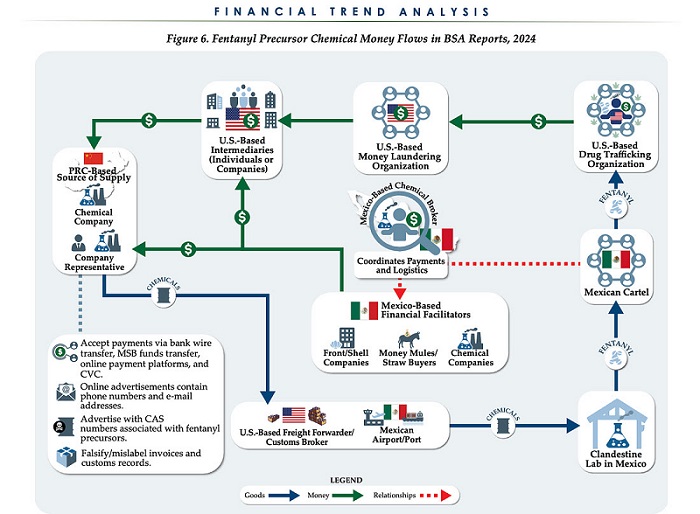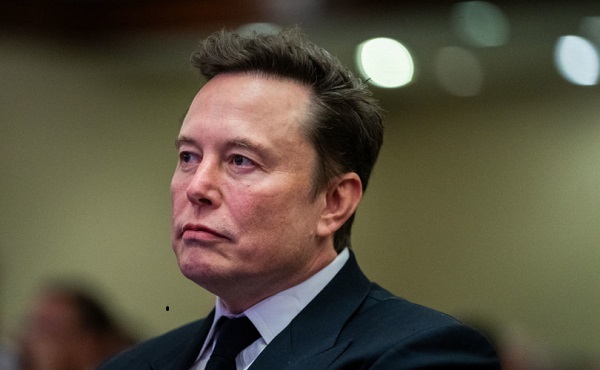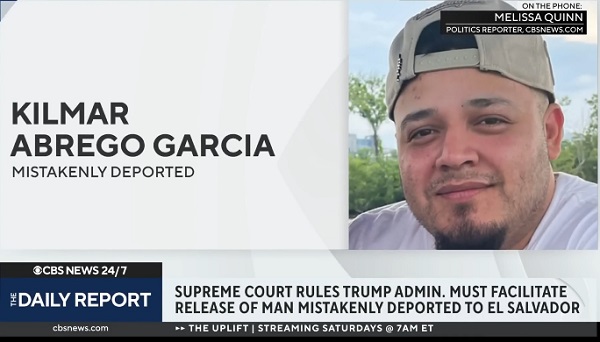Brownstone Institute
Trust “The Science”?

From the Brownstone Institute
BY
Thanksgiving weekend came and went in 2021. The soothsayers of Team Apocalypse were wrong again—the sky didn’t fall. Whole populations of families who dared to get together to celebrate were not wiped out. But that didn’t stop NIAID Director Dr. Anthony Fauci. The Covid fatality rate doesn’t hold a candle to the risk of standing between Dr. Fauci and a camera. After a few softball questions the television host of CBS’s Face the Nation asked Dr. Fauci about recent criticism of him from various corners. He replied:
So, it’s easy to criticize, but they’re really criticizing science because I represent science. That’s dangerous. To me, that’s more dangerous than the slings and the arrows that get thrown at me. I’m not going to be around here forever, but science is going to be here forever. And if you damage science, you are doing something very detrimental to society long after I leave. And that’s what I worry about.[i]
It is indeed dangerous to claim to represent science. Science doesn’t need sales reps, since it is the conceptualization of physical reality itself as determined by experiment and data. What Fauci truly represented is the authoritarian State with a capital “S.”
Emails released through the Freedom of Information Act show Fauci to be a manipulative man of politics, deftly brushing off lengthy diatribes against him or mustering forces to push back on Team Reality. It really is quite the position to be in as the highest paid federal employee in history to call upon the systematic enterprise of knowledge known as “science” to shield you from criticism.[ii]
The damage wrought upon our science as an actual institution is incalculable. As Dr. Jay Bhattacharya noted: “The current generation of top public health leaders will need to step down before trust is restored.”[iii]
The science is not what they say it is and you are not required to acquiesce to anyone’s determinations but your own. Indeed, when someone declares themselves to be the voice of authority in all things—run.
Science and the Application of Science Are Not the Same Thing
One keen realization our society must grapple with is separating the science from the application of that science. The science may indeed dictate that we experienced the spread of a highly transmissible deadly viral aerosolized respiratory pathogen, but it does not follow that you need to lose your job after that. Or that we ought to destroy the economy of a country. Or deprive a generation of children of proper learning.
Dr. Scott Atlas was lambasted by Team Apocalypse again and again for not being a virologist, but he was not sent to the White House to fix “the science”—he was there to fix the policy. Indeed, Dr. Atlas had keen and deep expertise in the application of science to public policy, something Dr. Fauci has failed at again and again in his career.
Our Constitution affords US citizens many enumerated rights and protections in our pursuit of happiness. Many of these endowed freedoms are couched in language specifically protecting us from the government writ large. While courts might attest to some extreme event placing some of these rights into dormancy, it did not give Dr. Fauci the right to put our rights, indeed our whole Constitution, into a coma.
The Institutions Lie. And Lie. And Lie.
Myriad once-trusted institutions have suffered greatly under the boom which Dr. Fauci and company lowered onto the American people and, frankly, the world.
The CDC has lost immense trust on all sides. From Dr. Redfield’s declaration that masks are better than vaccines to Dr. Walensky selling you a non-sterilizing sterilizing vaccine—this institution has wreaked the greatest havoc over the entire pandemic. They manipulated data, hid data, ignored data, invented data, deleted data, dismissed data, and all around succumbed to political pressure. Whether it was from teachers’ unions or a meddling White House, the CDC failed to provide any real leadership. With a budget of billions and over twenty thousand employees the amount of work they produced was puny and questionable at every step.
The National Institute of Health (NIH) is another behemoth that needs a thorough cleaning. Their (now) former director, Francis Collins, penned the infamous email calling out the signers of the Great Barrington Declaration.
“This proposal from the three fringe epidemiologists . . . seems to be getting a lot of attention—and even a co-signature from Nobel Prize winner Mike Leavitt at Stanford. There needs to be a quick and devastating published take down of its premises,” Collins ends the email: “Is it underway?”[iv]
If it wasn’t, the establishment institutional heads got in gear and made sure to jumpstart the process of attempting to destroy the reputations of the signers, all manifestly qualified and fantastically credentialled scientists and doctors.
The National Institute of Allergy and Infectious Diseases (NIAID) headed by Dr. Fauci is one of the key culprits stalling any real progress on trust and communication around these vital topics. Fauci and Collins are keenly involved with all areas of research in this federal healthcare monstrosity and influence millions of dollars in grants given every year. No wonder the spectrum of literature produced here did little to further any alternate views on lockdowns, masking, vaccines, and other COVID-19 implementations. The folks setting the policy also hold the purse strings.
It was obvious from the get-go that the structure of our county-centric administration of health policy was going to be problematic. These local health directors and advisors have little if any accountability. They are unelected bureaucrats and were given immense powers over the lives of citizens in their areas. The replete inconsistency with how federal health policy and information was conveyed to the public is an embarrassment. These county entities were given massive outlays of taxpayer dollars for the fruitless effort of contact tracing. The impact was not just on our wallets. As Jay Bhattacharya noted: “Hospital staffing shortages are at least in part due to rigidly enforced vaccine mandates and to mass asymptomatic testing and contact tracing. How many more people must suffer because of the monomaniacal focus on COVID at the expense of public health?” Contact tracing at the county level became a de facto quarantine machine, especially for students.
Most did it, many of us knowing it was pointless. But the pointlessness became the point. Comply, or you are a bad person. Comply or it’s no more school for you.
And comply many people did, thinking they would weather the madness, counting the cost on their hearts and spirits as worth the sacrifice for their children’s education. One more stricture, and the schools will open. Follow one more edict and the playground tape will come off. And so it went for two plus years. So it still goes in many places. We were duped, but we also duped ourselves.
Public Trust Was Destroyed
The impact on the public trust is massive. Curiously, after the 2009 H1N1 debacle, an article was published on the NIH website entitled: “’Listen to the People:’ Public Deliberation About Social Distancing Measures in a Pandemic”[v] The article notes the vital need for good and honest communication to the public about measures being taken the protect the citizenry. It notes: “Public engagement in ethically laden pandemic planning decisions may be important for transparency, creating public trust, improving compliance with public health orders, and ultimately, contributing to just outcomes.”
Ya’ think? This is something at which Fauci and company dramatically failed. At one point, early in the pandemic, Fauci advised against face masks but later admitted he was telling this “noble lie” to slow the impact on material needs and hospital settings. Honesty was a not a key feature of this pandemic.
The report continues: “We conducted focus groups with members of the public to characterize public perceptions about social distancing measures likely to be implemented during a pandemic. Participants expressed concerns about job security and economic strain on families if businesses or school closures are prolonged. They shared opposition to closure of religious organizations, citing the need for shared support and worship during times of crises.”
It was all right there. It is on the website of the National Institute of Health.
They ignored all of it.
The report concludes: “Social distancing measures may be challenging to implement and sustain due to strains on family resources and lack of trust in government.”
What a stark and terrible reminder that the institutions which prized themselves on public health damaged the public more than anything else. Your trust should be in the bedrock of our Constitution, not in some self-endowed title of “Science.”
Reprinted from the author’s Substack
Brownstone Institute
If the President in the White House can’t make changes, who’s in charge?

From the Brownstone Institute
By
Who Controls the Administrative State?
President Trump on March 20, 2025, ordered the following: “The Secretary of Education shall, to the maximum extent appropriate and permitted by law, take all necessary steps to facilitate the closure of the Department of Education.”
That is interesting language: to “take all necessary steps to facilitate the closure” is not the same as closing it. And what is “permitted by law” is precisely what is in dispute.
It is meant to feel like abolition, and the media reported it as such, but it is not even close. This is not Trump’s fault. The supposed authoritarian has his hands tied in many directions, even over agencies he supposedly controls, the actions of which he must ultimately bear responsibility.
The Department of Education is an executive agency, created by Congress in 1979. Trump wants it gone forever. So do his voters. Can he do that? No but can he destaff the place and scatter its functions? No one knows for sure. Who decides? Presumably the highest court, eventually.
How this is decided – whether the president is actually in charge or really just a symbolic figure like the King of Sweden – affects not just this one destructive agency but hundreds more. Indeed, the fate of the whole of freedom and functioning of constitutional republics may depend on the answer.
All burning questions of politics today turn on who or what is in charge of the administrative state. No one knows the answer and this is for a reason. The main functioning of the modern state falls to a beast that does not exist in the Constitution.
The public mind has never had great love for bureaucracies. Consistent with Max Weber’s worry, they have put society in an impenetrable “iron cage” built of bloodless rationalism, needling edicts, corporatist corruption, and never-ending empire-building checked by neither budgetary restraint nor plebiscite.
Today’s full consciousness of the authority and ubiquity of the administrative state is rather new. The term itself is a mouthful and doesn’t come close to describing the breadth and depth of the problem, including its root systems and retail branches. The new awareness is that neither the people nor their elected representatives are really in charge of the regime under which we live, which betrays the whole political promise of the Enlightenment.
This dawning awareness is probably 100 years late. The machinery of what is popularly known as the “deep state” – I’ve argued there are deep, middle, and shallow layers – has been growing in the US since the inception of the civil service in 1883 and thoroughly entrenched over two world wars and countless crises at home and abroad.
The edifice of compulsion and control is indescribably huge. No one can agree precisely on how many agencies there are or how many people work for them, much less how many institutions and individuals work on contract for them, either directly or indirectly. And that is just the public face; the subterranean branch is far more elusive.
The revolt against them all came with the Covid controls, when everyone was surrounded on all sides by forces outside our purview and about which the politicians knew not much at all. Then those same institutional forces appear to be involved in overturning the rule of a very popular politician whom they tried to stop from gaining a second term.
The combination of this series of outrages – what Jefferson in his Declaration called “a long train of abuses and usurpations, pursuing invariably the same Object” – has led to a torrent of awareness. This has translated into political action.
A distinguishing mark of Trump’s second term has been an optically concerted effort, at least initially, to take control of and then curb administrative state power, more so than any executive in living memory. At every step in these efforts, there has been some barrier, even many on all sides.
There are at least 100 legal challenges making their way through courts. District judges are striking down Trump’s ability to fire workers, redirect funding, curb responsibilities, and otherwise change the way they do business.
Even the signature early achievement of DOGE – the shuttering of USAID – has been stopped by a judge with an attempt to reverse it. A judge has even dared tell the Trump administration who it can and cannot hire at USAID.
Not a day goes by when the New York Times does not manufacture some maudlin defense of the put-upon minions of the tax-funded managerial class. In this worldview, the agencies are always right, whereas any elected or appointed person seeking to rein them in or terminate them is attacking the public interest.
After all, as it turns out, legacy media and the administrative state have worked together for at least a century to cobble together what was conventionally called “the news.” Where would the NYT or the whole legacy media otherwise be?
So ferocious has been the pushback against even the paltry successes and often cosmetic reforms of MAGA/MAHA/DOGE that vigilantes have engaged in terrorism against Teslas and their owners. Not even returning astronauts from being “lost in space” has redeemed Elon Musk from the wrath of the ruling class. Hating him and his companies is the “new thing” for NPCs, on a long list that began with masks, shots, supporting Ukraine, and surgical rights for gender dysphoria.
What is really at stake, more so than any issue in American life (and this applies to states around the world) – far more than any ideological battles over left and right, red and blue, or race and class – is the status, power, and security of the administrative state itself and all its works.
We claim to support democracy yet all the while, empires of command-and-control have arisen among us. The victims have only one mechanism available to fight back: the vote. Can that work? We do not yet know. This question will likely be decided by the highest court.
All of which is awkward. It is impossible to get around this US government organizational chart. All but a handful of agencies live under the category of the executive branch. Article 2, Section 1, says: “The executive Power shall be vested in a President of the United States of America.”

Does the president control the whole of the executive branch in a meaningful way? One would think so. It’s impossible to understand how it could be otherwise. The chief executive is…the chief executive. He is held responsible for what these agencies do – we certainly blasted away at the Trump administration in the first term for everything that happened under his watch. In that case, and if the buck really does stop at the Oval Office desk, the president must have some modicum of control beyond the ability to tag a marionette to get the best parking spot at the agency.
What is the alternative to presidential oversight and management of the agencies listed in this branch of government? They run themselves? That claim means nothing in practice.
For an agency to be deemed “independent” turns out to mean codependency with the industries regulated, subsidized, penalized, or otherwise impacted by its operations. HUD does housing development, FDA does pharmaceuticals, DOA does farming, DOL does unions, DOE does oil and turbines, DOD does tanks and bombs, FAA does airlines, and so on It goes forever.
That’s what “independence” means in practice: total acquiescence to industrial cartels, trade groups, and behind-the-scenes systems of payola, blackmail, and graft, while the powerless among the people live with the results. This much we have learned and cannot unlearn.
That is precisely the problem that cries out for a solution. The solution of elections seems reasonable only if the people we elected actually have the authority over the thing they seek to reform.
There are criticisms of the idea of executive control of executive agencies, which is really nothing other than the system the Founders established.
First, conceding more power to the president raises fears that he will behave like a dictator, a fear that is legitimate. Partisan supporters of Trump won’t be happy when the precedent is cited to reverse Trump’s political priorities and the agencies turn on red-state voters in revenge.
That problem is solved by dismantling agency power itself, which, interestingly, is mostly what Trump’s executive orders have sought to achieve and which the courts and media have worked to stop.
Second, one worries about the return of the “spoils system,” the supposedly corrupt system by which the president hands out favors to friends in the form of emoluments, a practice the establishment of the civil service was supposed to stop.
In reality, the new system of the early 20th century fixed nothing but only added another layer, a permanent ruling class to participate more fully in a new type of spoils system that operated now under the cloak of science and efficiency.
Honestly, can we really compare the petty thievery of Tammany Hall to the global depredations of USAID?
Third, it is said that presidential control of agencies threatens to erode checks and balances. The obvious response is the organizational chart above. That happened long ago as Congress created and funded agency after agency from the Wilson to the Biden administration, all under executive control.
Congress perhaps wanted the administrative state to be an unannounced and unaccountable fourth branch, but nothing in the founding documents created or imagined such a thing.
If you are worried about being dominated and destroyed by a ravenous beast, the best approach is not to adopt one, feed it to adulthood, train it to attack and eat people, and then unleash it.
The Covid years taught us to fear the power of the agencies and those who control them not just nationally but globally. The question now is two-fold: what can be done about it and how to get from here to there?
Trump’s executive order on the Department of Education illustrates the point precisely. His administration is so uncertain of what it does and can control, even of agencies that are wholly executive agencies, listed clearly under the heading of executive agencies, that it has to dodge and weave practical and legal barriers and land mines, even in its own supposed executive pronouncements, even to urge what might amount to be minor reforms.
Whoever is in charge of such a system, it is clearly not the people.
Brownstone Institute
The New Enthusiasm for Slaughter

From the Brownstone Institute
By
What War Means
My mother once told me how my father still woke up screaming in the night years after I was born, decades after the Second World War (WWII) ended. I had not known – probably like most children of those who fought. For him, it was visions of his friends going down in burning aircraft – other bombers of his squadron off north Australia – and to be helpless, watching, as they burnt and fell. Few born after that war could really appreciate what their fathers, and mothers, went through.
Early in the movie Saving Private Ryan, there is an extended D-Day scene of the front doors of the landing craft opening on the Normandy beaches, and all those inside being torn apart by bullets. It happens to one landing craft after another. Bankers, teachers, students, and farmers being ripped in pieces and their guts spilling out whilst they, still alive, call for help that cannot come. That is what happens when a machine gun opens up through the open door of a landing craft, or an armored personnel carrier, of a group sent to secure a tree line.
It is what a lot of politicians are calling for now.
People with shares in the arms industry become a little richer every time one of those shells is fired and has to be replaced. They gain financially, and often politically, from bodies being ripped open. This is what we call war. It is increasingly popular as a political strategy, though generally for others and the children of others.
Of course, the effects of war go beyond the dismembering and lonely death of many of those fighting. Massacres of civilians and rape of women can become common, as brutality enables humans to be seen as unwanted objects. If all this sounds abstract, apply it to your loved ones and think what that would mean.
I believe there can be just wars, and this is not a discussion about the evil of war, or who is right or wrong in current wars. Just a recognition that war is something worth avoiding, despite its apparent popularity amongst many leaders and our media.
The EU Reverses Its Focus
When the Brexit vote determined that Britain would leave the European Union (EU), I, like many, despaired. We should learn from history, and the EU’s existence had coincided with the longest period of peace between Western European States in well over 2,000 years.
Leaving the EU seemed to be risking this success. Surely, it is better to work together, to talk and cooperate with old enemies, in a constructive way? The media, and the political left, center, and much of the right seemed at that time, all of nine years ago, to agree. Or so the story went.
We now face a new reality as the EU leadership scrambles to justify continuing a war. Not only continuing, but they had been staunchly refusing to even countenance discussion on ending the killing. It has taken a new regime from across the ocean, a subject of European mockery, to do that.
In Europe, and in parts of American politics, something is going on that is very different from the question of whether current wars are just or unjust. It is an apparent belief that advocacy for continued war is virtuous. Talking to leaders of an opposing country in a war that is killing Europeans by the tens of thousands has been seen as traitorous. Those proposing to view the issues from both sides are somehow “far right.”
The EU, once intended as an instrument to end war, now has a European rearmament strategy. The irony seems lost on both its leaders and its media. Arguments such as “peace through strength” are pathetic when accompanied by censorship, propaganda, and a refusal to talk.
As US Vice-President JD Vance recently asked European leaders, what values are they actually defending?
Europe’s Need for Outside Help
A lack of experience of war does not seem sufficient to explain the current enthusiasm to continue them. Architects of WWII in Europe had certainly experienced the carnage of the First World War. Apart from the financial incentives that human slaughter can bring, there are also political ideologies that enable the mass death of others to be turned into an abstract and even positive idea.
Those dying must be seen to be from a different class, of different intelligence, or otherwise justifiable fodder to feed the cause of the Rules-Based Order or whatever other slogan can distinguish an ‘us’ from a ‘them’…While the current incarnation seems more of a class thing than a geographical or nationalistic one, European history is ripe with variations of both.
Europe appears to be back where it used to be, the aristocracy burning the serfs when not visiting each other’s clubs. Shallow thinking has the day, and the media have adapted themselves accordingly. Democracy means ensuring that only the right people get into power.
Dismembered European corpses and terrorized children are just part of maintaining this ideological purity. War is acceptable once more. Let’s hope such leaders and ideologies can be sidelined by those beyond Europe who are willing to give peace a chance.
There is no virtue in the promotion of mass death. Europe, with its leadership, will benefit from outside help and basic education. It would benefit even further from leadership that values the lives of its people.
-

 Business2 days ago
Business2 days agoChina, Mexico, Canada Flagged in $1.4 Billion Fentanyl Trade by U.S. Financial Watchdog
-

 2025 Federal Election2 days ago
2025 Federal Election2 days agoTucker Carlson Interviews Maxime Bernier: Trump’s Tariffs, Mass Immigration, and the Oncoming Canadian Revolution
-

 Business2 days ago
Business2 days agoDOGE Is Ending The ‘Eternal Life’ Of Government
-

 espionage2 days ago
espionage2 days agoEx-NYPD Cop Jailed in Beijing’s Transnational Repatriation Plot, Canada Remains Soft Target
-

 2025 Federal Election1 day ago
2025 Federal Election1 day agoBREAKING from THE BUREAU: Pro-Beijing Group That Pushed Erin O’Toole’s Exit Warns Chinese Canadians to “Vote Carefully”
-

 2025 Federal Election2 days ago
2025 Federal Election2 days agoCanada drops retaliatory tariffs on automakers, pauses other tariffs
-

 Daily Caller1 day ago
Daily Caller1 day agoDOJ Releases Dossier Of Deported Maryland Man’s Alleged MS-13 Gang Ties
-

 Daily Caller1 day ago
Daily Caller1 day agoTrump Executive Orders ensure ‘Beautiful Clean’ Affordable Coal will continue to bolster US energy grid







